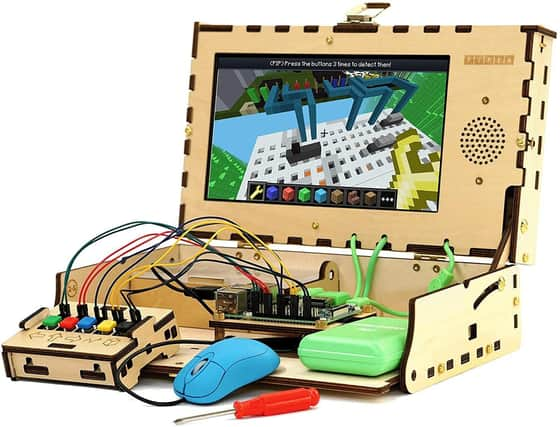Kids after a new PC? Help them build their own


Raspberry Pi mini-PCs have been around for some years now. They can do much of what a full-sized machine can accomplish but they are aimed at hobbyists and classrooms, as an aid to learning the dark arts of writing code.
They don’t look much like computers because they have no cases, unless you choose to buy one separately; they are just matchbox-size circuit boards with wires coming from every corner. They are to computing what the cat’s whisker detector was to broadcasting 100 years ago.
Advertisement
Hide AdAdvertisement
Hide AdYou need only a basic knowledge of what goes where to set one up, and a PC monitor, mouse and keyboard completes your system. But why even buy those off the shelf when you can make your own?
The Piper Computer Kit does for electronics what Meccano did for engineering by combining all the components needed to build a basic PC and play Minecraft on it. If you don’t know what that is, ask an eight-year-old, for it is children of that age at whom the product is aimed.
At the heart of the kit is a Raspberry Pi but it sits within a wood-and-plastic case that opens up to reveal a nine-inch screen, rechargeable battery and other components. It looks like a laptop knocked up in Pinocchio’s workshop.
The kit also includes upwards of 20 electronic components which children can use to further extend the capabilities of their Raspberry Pi, which is after all useful for far more than game playing.
Advertisement
Hide AdAdvertisement
Hide AdIt’s not cheap at around £280 and you could buy the components separately for a fraction of the cost, but as a present for an inquisitive youngster, it might literally be priceless.
The £300 Kano PC is a laptop that takes a similar approach, but comes mostly preassembled, though you can see the innards through the transparent plastic case. And because it runs Windows it can compete with conventional laptops and netbooks at the cheap end of the market.
The Kano is probably the closest you can get to building a laptop from scratch, but the opposite is true of desktop PCs which can be assembled by anyone aged 12 and over, and will when finished be as good or better than anything on the shelves at Currys.
That’s because most of those are themselves DIY jobs, put together from parts freely available on the open market. The only difference is that the assembly is done at a factory in the far east, not in someone’s bedroom.
Advertisement
Hide AdAdvertisement
Hide AdThere are only eight components involved in a standard PC: the motherboard, processor, memory, hard drive, network adapter, optional graphics card, power supply and a case to put them in. You need to know which ones to pick, but online retailers like www.awd-it.co.uk will take the guesswork out of it by selling you the first three of those items as a preassembled bundle, with very credible models starting at less than £200. An inquisitive secondary school child will soon have them installed in a £30 glowing neon case and hooked up to the other necessary parts. This is an education in itself and can foster a lifelong understanding of how computers are supposed to work and what to do when they don’t.
Home-built PCs are not only cheaper than the shop-bought variety but also more expandable, if you plan them properly, because it’s easy to upgrade individual components when the need arises. It’s also a perfectly respectable hobby for those over 12 and with enough time on their hands to disappear into the shed for hours on end.
Support The Yorkshire Post and become a subscriber today.
Your subscription will help us to continue to bring quality news to the people of Yorkshire. In return, you’ll see fewer ads on site, get free access to our app and receive exclusive members-only offers.
So, please – if you can – pay for our work. Just £5 per month is the starting point. If you think that which we are trying to achieve is worth more, you can pay us what you think we are worth. By doing so, you will be investing in something that is becoming increasingly rare. Independent journalism that cares less about right and left and more about right and wrong. Journalism you can trust.
Thank you
James Mitchinson
Comment Guidelines
National World encourages reader discussion on our stories. User feedback, insights and back-and-forth exchanges add a rich layer of context to reporting. Please review our Community Guidelines before commenting.